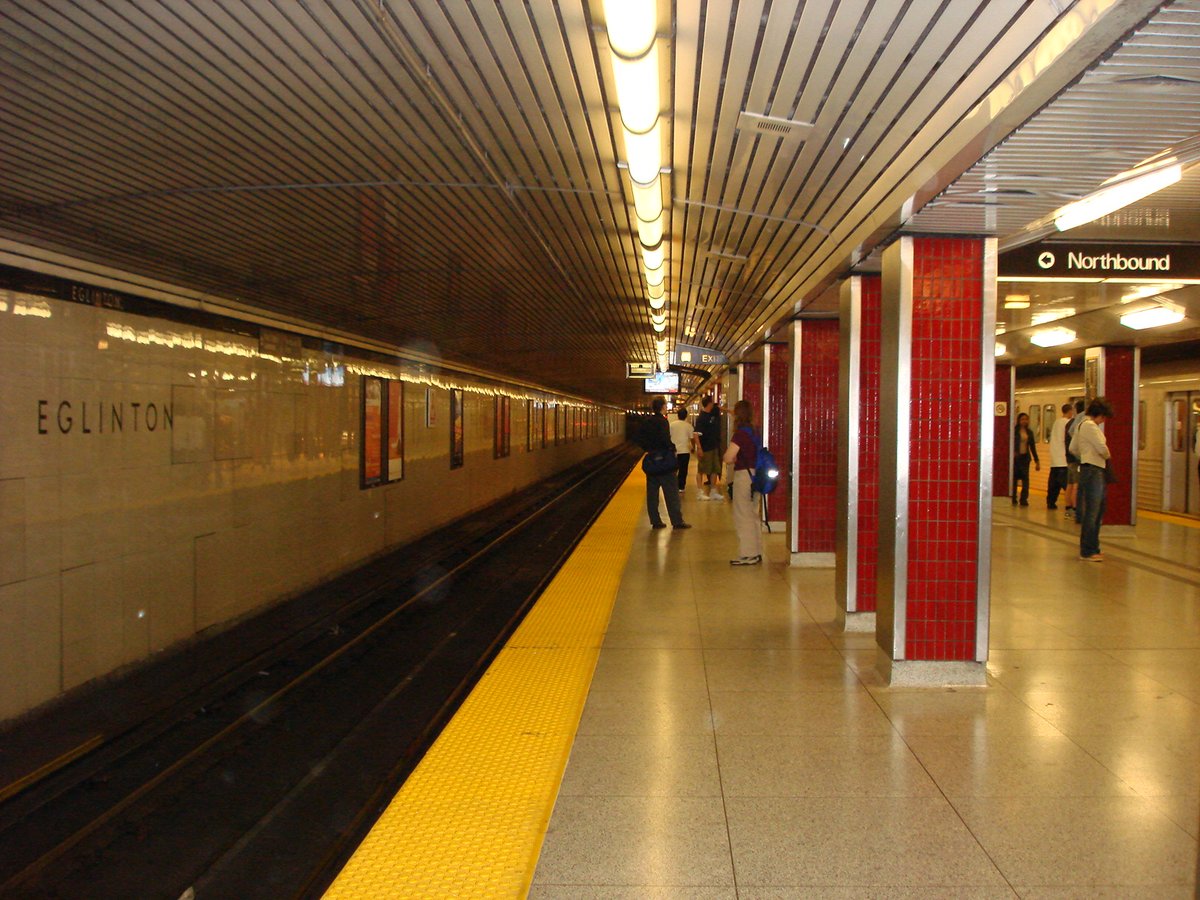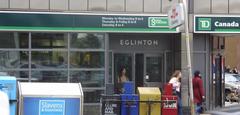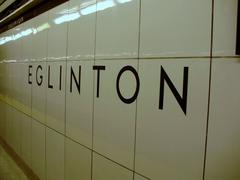
Eglinton Toronto Visiting Guide: Tickets, Hours, and Attractions
Date: 14/06/2025
Introduction to Eglinton Toronto
Eglinton Avenue is one of Toronto’s most dynamic corridors, renowned for its rich history, diverse cultural landscape, and ever-evolving urban fabric. Once part of York Township and the site of pivotal events like the Upper Canada Rebellion of 1837 (Transittoronto.ca), Eglinton has grown into a vibrant midtown hub. Visitors can experience a remarkable blend of preserved architectural heritage, such as the Art Deco Eglinton Grand Theatre and the Classical Revival storefronts of Eglinton West, alongside the Caribbean vibrancy of Little Jamaica (Toronto.ca; Heritage Toronto; Eglinton Grand Official Website). The ongoing expansion of the Eglinton Crosstown LRT (Line 5) further cements Eglinton’s role as a key connector and urban destination (Wikipedia; Toronto Star).
This guide provides everything you need to plan your visit, including historical context, practical tips on hours and tickets, accessibility information, and highlights of key attractions and events.
Table of Contents
- Introduction
- Historical Overview
- Visitor Information: Hours, Tickets, Accessibility
- Key Attractions and Things to Do
- Events and Festivals
- Practical Tips for Visitors
- FAQs
- Key Historical Milestones
- Conclusion & Call to Action
- Sources
Historical Overview
Early Settlement and Origins
Eglinton’s story begins in the early 19th century as part of York Township. The intersection of Yonge and Eglinton became a vital crossroads, with Montgomery’s Tavern (the launch point for the Upper Canada Rebellion in 1837) marking its earliest historical significance (Transittoronto.ca). The area was largely rural until the late 1800s, when the Metropolitan Street Railway introduced horse-drawn streetcar service, fueling residential and commercial growth (myrental.ca).
Annexation and Urban Growth
North Toronto, including Eglinton, was annexed by the City of Toronto in 1912, which accelerated development and infrastructure improvements (myrental.ca). Grand theatres like the Capitol (1922) and Postal Station K (1913, built on the site of Montgomery’s Tavern) are architectural reminders of this era (Toronto.ca). The 1920s–1940s saw a housing boom, with a mix of Tudor, Colonial, and Victorian homes, and bustling commercial strips emerging along Eglinton.
Architectural and Cultural Heritage
Eglinton Avenue West is lined with heritage-designated properties, including notable storefronts from the 1920s and 1930s characterized by glazed façades and upper-level residences or offices (Toronto.ca). The corridor’s multicultural identity was established post-World War II, with waves of immigrants—Italian, Portuguese, German, and Jewish—contributing to the area’s vibrant business and cultural scene (Heritage Toronto).
Transportation and Midtown Development
The opening of the Yonge subway in 1954, with Eglinton as the northern terminus, was a transformative moment for the area (Transittoronto.ca). This established Yonge & Eglinton as Toronto’s “midtown,” shifting the city’s commercial and residential center northward. The Yonge Eglinton Centre (1974) brought new office towers, condos, and retail space, while transit access solidified the intersection’s status as a vital city node (myrental.ca).
Modern Transformation: The Eglinton Crosstown
Transit development has long shaped Eglinton’s future. The Eglinton Crosstown LRT (Line 5), a major east-west light rail line, is set to transform Eglinton again by increasing transit speed, accessibility, and spurring further revitalization (Wikipedia). The line includes 43 stops (13 underground), with construction prompting conservation efforts for historic buildings (Toronto.ca). The project represents the largest expansion of Toronto’s transit network since the 1950s.
Community Identity
Eglinton’s cultural identity is inseparable from its diverse communities, especially the Caribbean diaspora in Little Jamaica. From the 1960s onward, this area became a center for Black-owned businesses, reggae music, and Caribbean cuisine (Heritage Toronto). Today, the intersection of history, culture, and urban life makes Eglinton a microcosm of Toronto itself.
Visitor Information: Hours, Tickets, and Accessibility
Visiting Hours
- Historic sites and public art: Viewable from the street 24/7.
- Shops, restaurants, and cultural centers: Generally open 9 AM–9 PM, with some variation.
- Eglinton Grand Theatre: Hours depend on scheduled events; contact the venue for tours or open houses (Eglinton Grand Official Website).
- Heritage tours: Typically scheduled weekends; check with local organizations for times.
Tickets and Admission
- Public spaces and monuments: Free to view.
- Guided tours: Range from CA$10–$50, depending on tour depth and size.
- Events at Eglinton Grand: Tickets available via the box office or authorized sellers.
- Community festivals (e.g., Fairbank Summerfest): Usually free entry; some activities may require tickets (Fairbank Summerfest).
Accessibility
- Transit: Eglinton Station (Line 1) and multiple bus routes; Eglinton Crosstown LRT (Line 5) increases future accessibility.
- Mobility: Most public spaces are wheelchair accessible; check individual venues for specific accommodations.
- Parking: Metered street parking and public lots; limited availability during busy times.
Key Attractions and Things to Do
Eglinton Grand Theatre
An Art Deco marvel, the Eglinton Grand opened in 1936 and now serves as a cultural and event venue. The theatre’s restored interiors and facade make it a highlight for architecture buffs and history lovers alike (Eglinton Grand Official Website). Guided tours are occasionally available.
Little Jamaica
This stretch of Eglinton West is a living cultural district, home to Black-owned businesses, music shops, and authentic Caribbean eateries. Occasional walking tours and community events showcase the vibrant heritage (Toronto.ca; Heritage Toronto).
Heritage Landmarks
- Montgomery’s Tavern (Postal Station K): A central historical site at Yonge & Eglinton.
- Hydro Substation (50-60 Eglinton Ave West): Preserved industrial architecture integrated into new developments (Storeys).
- Eglinton Park: Green space for recreation.
Shopping and Dining
- Yonge & Eglinton Centre: Major shopping and dining hub.
- Boutiques and local shops: Numerous independent retailers line Eglinton Avenue.
Events and Festivals
- Fairbank Summerfest: Annual street festival with live music, food, and family-friendly activities (Fairbank Summerfest).
- Cultural celebrations: Regular events in Little Jamaica and nearby parks.
- Heritage tours and open houses: Offered by local organizations throughout the year.
Practical Tips for Visitors
- Transit: Use the TTC’s Eglinton Station for subway and bus connections; Line 5 LRT will open soon.
- Plan ahead: Check event calendars and book tours or tickets in advance, especially during festival seasons.
- Accessibility: Most attractions are wheelchair accessible; verify details with individual venues if required.
- Support local: Patronize independent businesses, especially in Little Jamaica, to help sustain the area’s cultural vibrancy.
- Photography: Many sites are ideal for photos; respect any restrictions during private events.
Frequently Asked Questions (FAQ)
Q: What are the hours for heritage sites along Eglinton?
A: Most sites and public art are viewable at any time. Shops and restaurants generally operate from 9 AM to 9 PM.
Q: Are there guided tours of Eglinton’s history?
A: Yes, local organizations and community groups occasionally offer tours. Check their websites for schedules.
Q: Is the area accessible for people with disabilities?
A: Yes, transit stations and most public spaces are accessible; contact venues for specific accommodations.
Q: Do I need tickets for events or tours?
A: Some events and most guided tours require advance ticketing; public spaces are free.
Q: What is the best way to get to Eglinton?
A: TTC subway (Line 1), Eglinton Crosstown LRT (Line 5, opening soon), and several bus routes serve the area.
Key Historical Milestones
- 1837: Montgomery’s Tavern, site of the Upper Canada Rebellion (Transittoronto.ca).
- 1885: Horse-drawn streetcar service begins (myrental.ca).
- 1912: North Toronto annexed by Toronto.
- 1922: Capitol Theatre opens.
- 1936: Eglinton Grand Theatre opens.
- 1954: Eglinton Subway Station becomes Yonge line’s northern terminus.
- 1974: Yonge Eglinton Centre completed.
- 2007–present: Eglinton Crosstown LRT development (Wikipedia).
Conclusion & Call to Action
Eglinton is a living tapestry of Toronto’s history, culture, and urban progress. From heritage landmarks and multicultural neighborhoods to modern transit innovations, this corridor offers something for every visitor. Explore on foot, join a heritage tour, attend a festival, and support local businesses to truly immerse yourself in Eglinton’s story.
For the latest updates, virtual tours, and personalized guides, download the Audiala app and follow local heritage organizations on social media. Plan your visit and discover why Eglinton is an essential part of Toronto’s urban landscape.
Explore more:
- Toronto Historical Sites
- Cultural Landmarks in Eglinton
- Eglinton Grand Official Website
- City of Toronto Heritage
Sources
- Transittoronto.ca – Upper Canada Rebellion and Yonge-Eglinton history
- myrental.ca – A look back at Yonge and Eglinton
- Toronto.ca – Heritage preservation in Eglinton Avenue West
- Heritage Toronto – Little Jamaica Toronto history
- Toronto Star – Timeline of the Eglinton Crosstown LRT project
- Wikipedia – Line 5 Eglinton
- Toronto.com – History of Toronto’s Eglinton Crosstown LRT
- Eglinton Grand Official Website – Visit and events
- Storeys – Yonge-Eglinton West Towers and heritage integration
- Fairbank Summerfest – Community festival information





























































































































































































